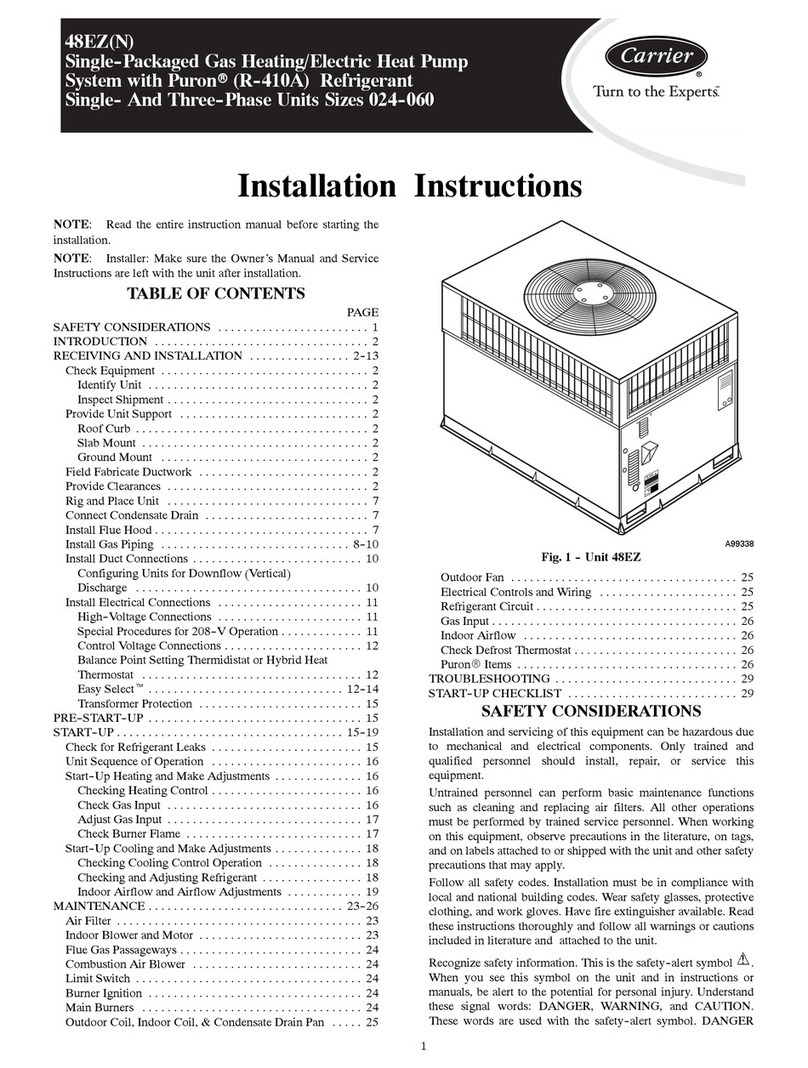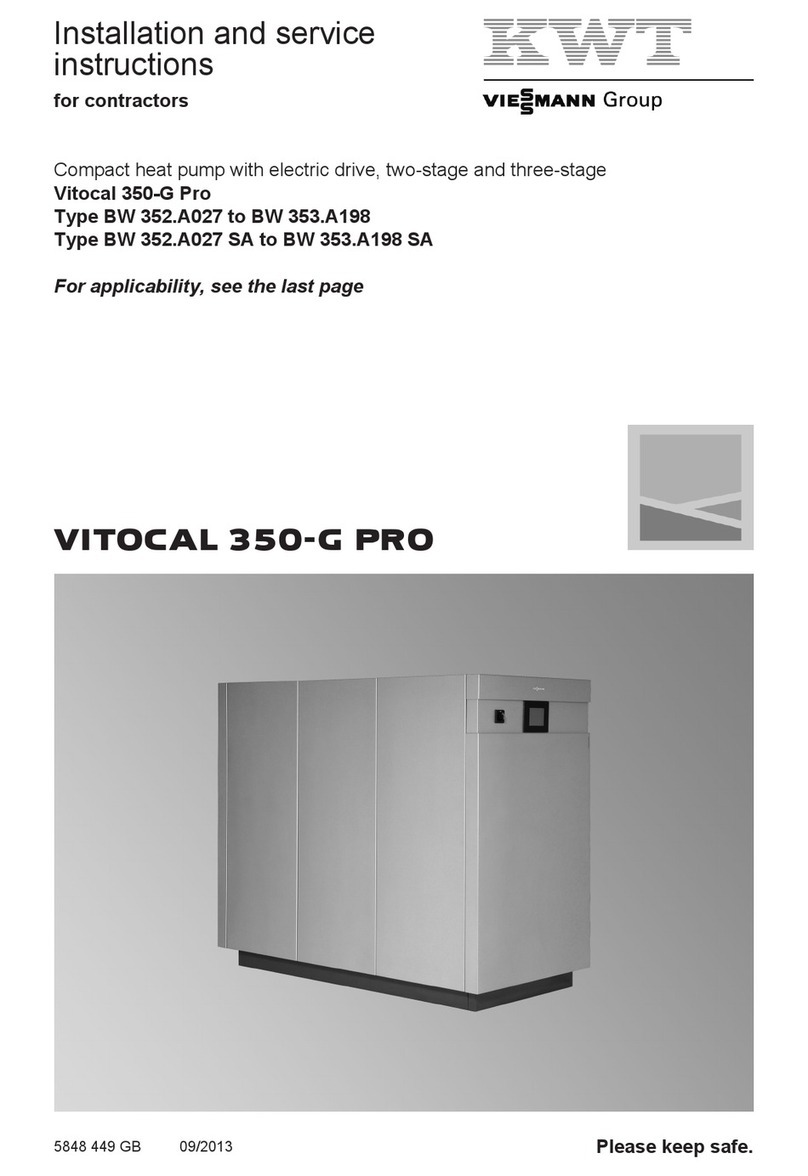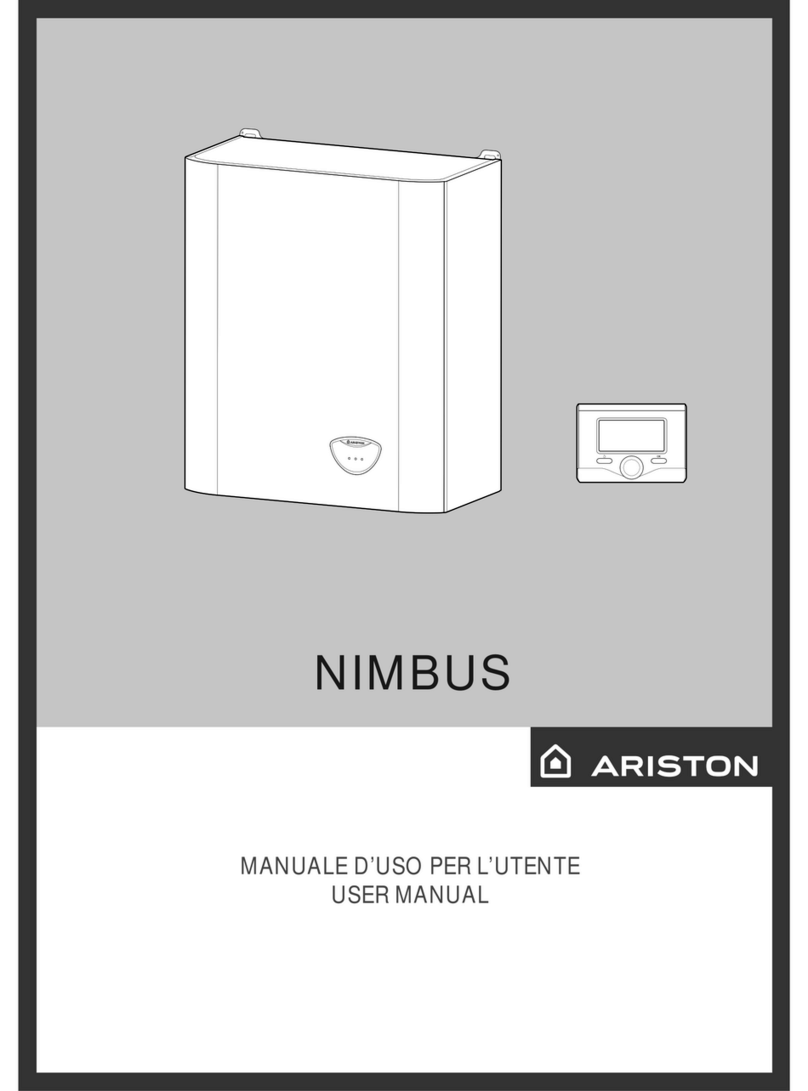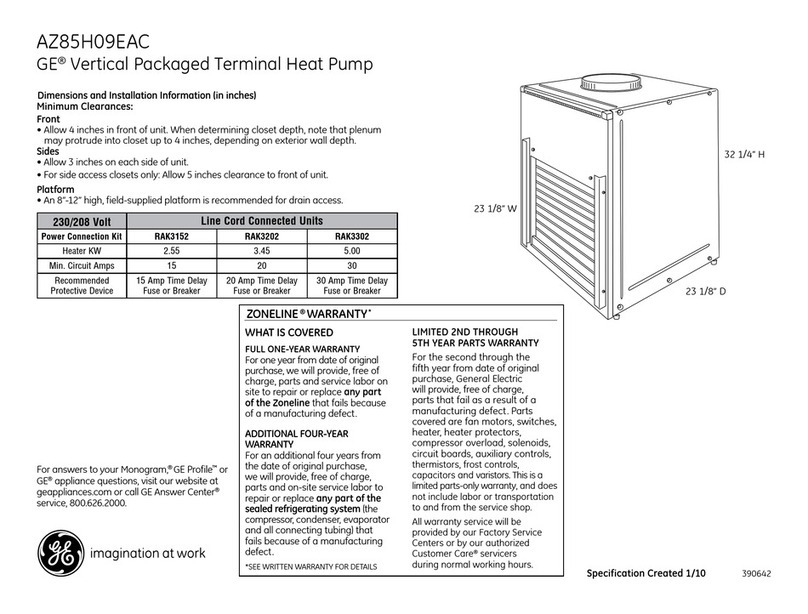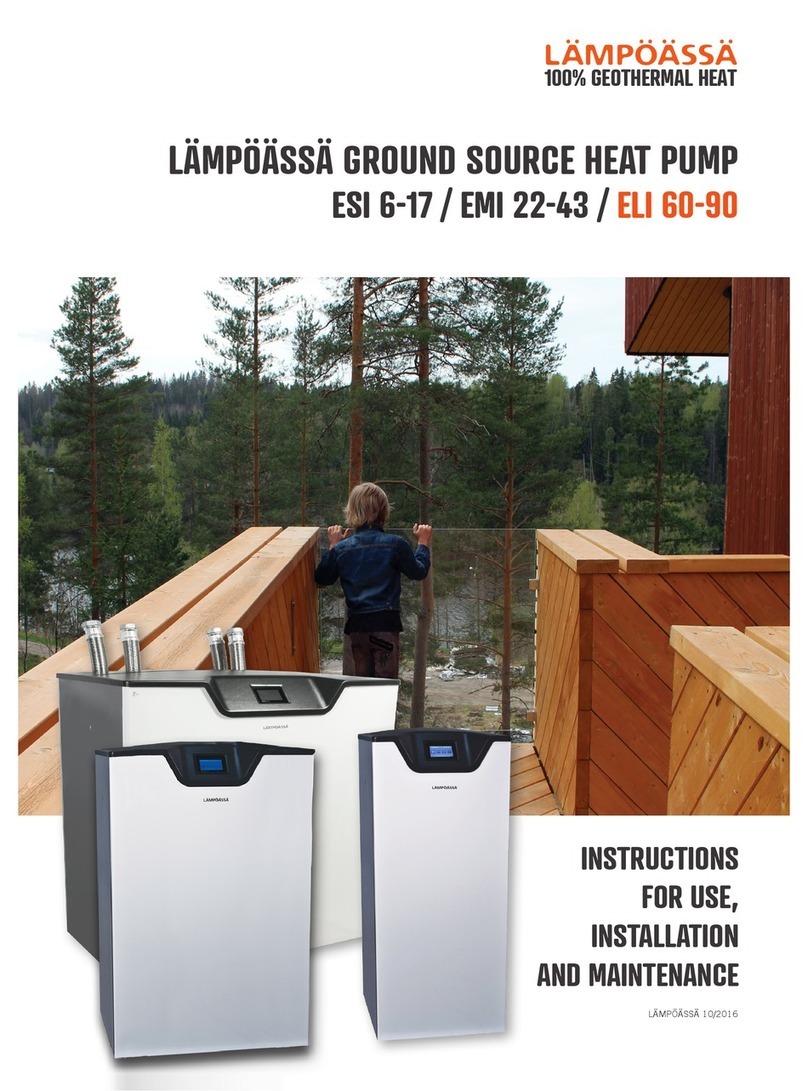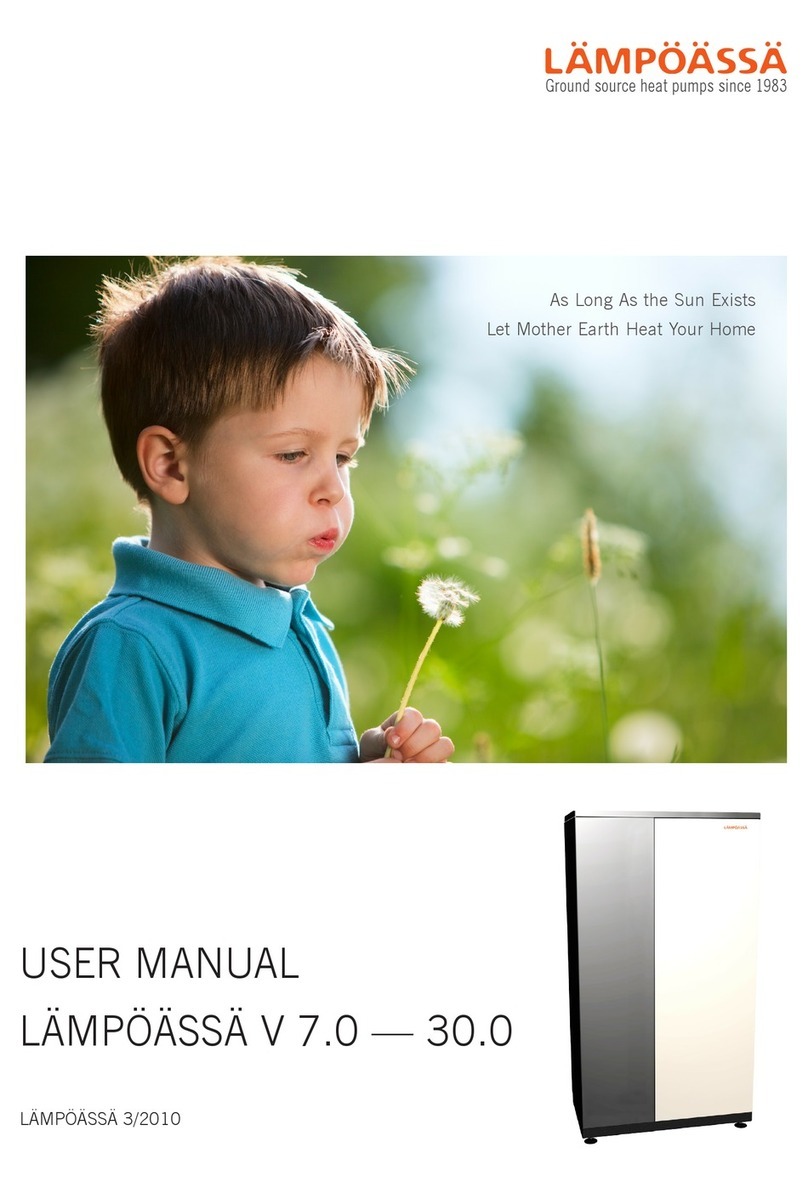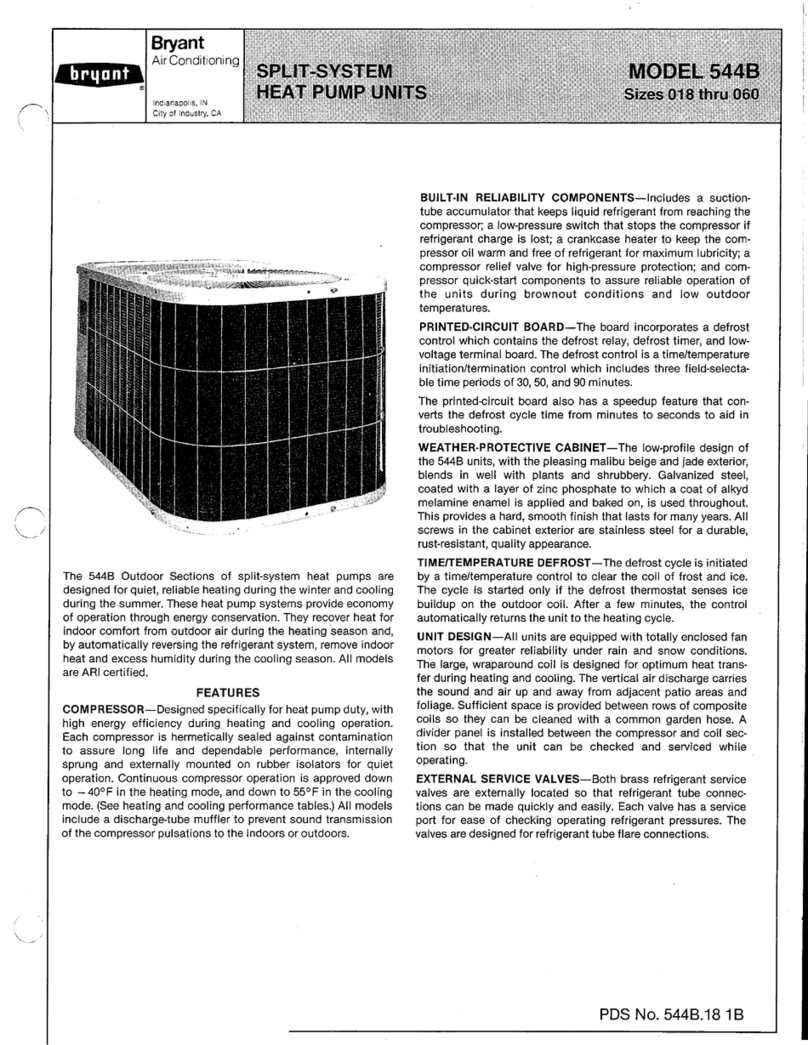1.4. Removing the packaging
Remove the plastic wrapping and corner padding from around the product. Check that the heat pump has not suffered any
damage during transportation. If the heat pump is found to be damaged, the company which delivered the product must be
immediately notied. Also check the contents of the delivery immediately.
1.5. Structure and operating principles
1.5.1. Structure
The Lämpöässä geothermal heat system consists of a network of heat collection pipes, a geothermal uid mixture circulating
within the network and a geothermal heat pump unit. The geothermal heat pump unit consists of a compressor, evaporator,
condenser and a refrigerant circulating inside the pump. The heat collection uid in the ground loop and the refrigerant
do not mix at any stage of the process.
1.5.2. Operation
The Lämpöässä heat pump transfers heat from the ground,
water system or a bore well. Of the total thermal energy requi-
red for heating, Lämpöässä collects more than 70% from
natural sources. Less than 30% of the electrical energy is
required for the collection of thermal energy. This energy is
used to run the various components in the system.
The heat collection pipe is a plastic pipe (PEM 40/10) with a water and ethyl alcohol or glycol-water mixture circulating
inside. It is placed 1-1.2 metres deep in the ground or at least 3 metres deep in water. The bore well is normally 100-
200 metres deep with a diameter of 140-165 mm. The heat pump is used in the transfer of heat from the water and
ethyl alcohol mixture. Approximately three degrees of heat is transferred into the refrigerant circulating inside the heat
pump, after which the geothermal uid returns to the ground loop to heat up again.
Heat is transferred from one uid to another in the evaporator, in which the refrigerant evaporates thanks to the low
suction head of the compressor. This binds the heat from the geothermal uid with the help of a disk thermal exchan-
ger. The pressure of the gaseous refrigerant is increased using a compressor which makes the temperature of the refri-
gerant rise. The heat contained in the gas is transported in the condenser to heat the water in the water tank and thus
produce hot water for use. As the heat is transferred, the gas turns into uid once again and is carried back through a
dehumidication lter and an expansion valve to circulate.
The Lämpöässä geothermal heat pump is suitable for producing hot water and heating single-family households, ter-
raced houses, ofces, hotels and industrial halls. Heat distribution can be implemented using oor heating with circu-
lating water, water-lled radiators or the circulation of hot air. Floor heating has the best operating efciency. In order
to ensure trouble-free operation, all Lämpöässä heat pumps have been test-run, set up and tested by the
manufacturer.







